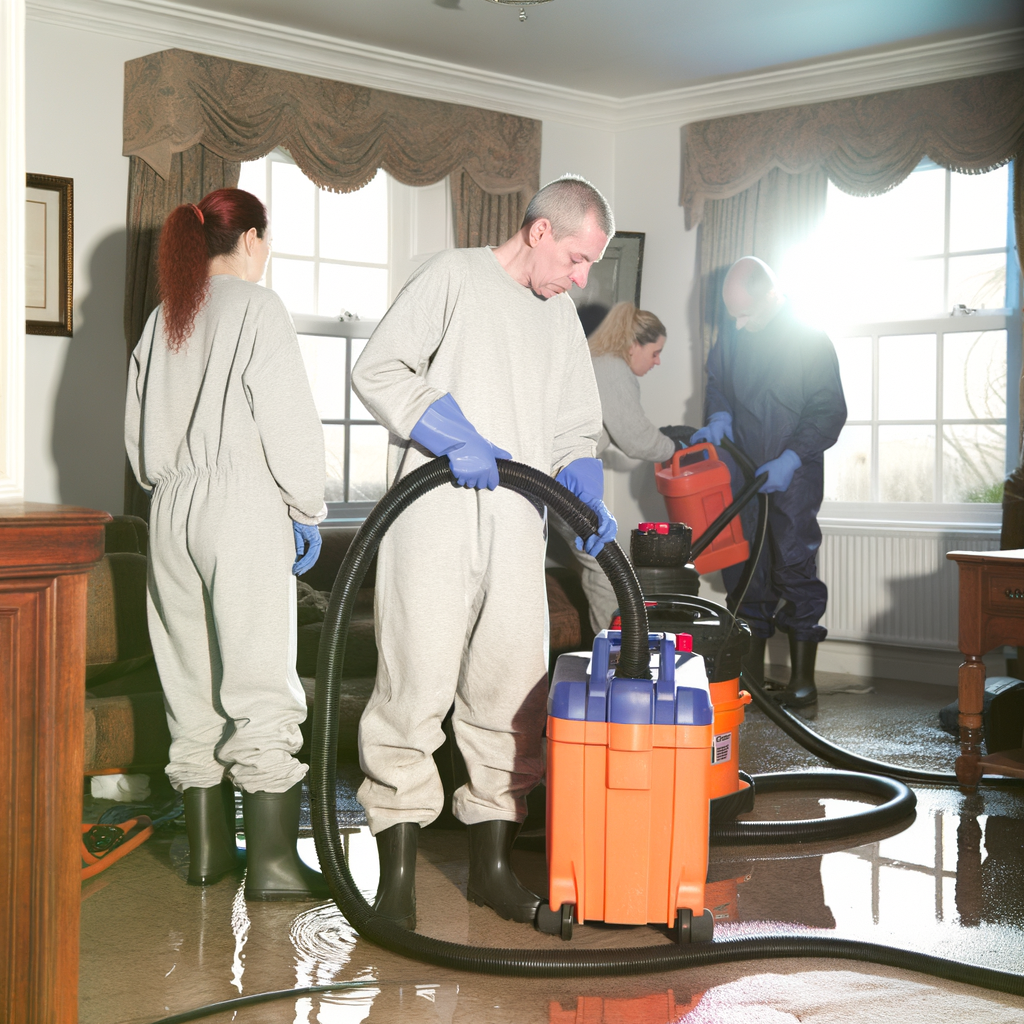Recovering from the Deluge: A Comprehensive Guide to Flood Damage Cleanup and Restoration in the UK
Floods, one of the most prevalent perils in the UK, exert widespread and considerable impacts on human lives and infrastructure. In 2020 alone, according to the Environment Agency, some 400,000 properties were at high risk of flooding from rivers and sea. Recovering from the aftermath is not just a matter of cleanups. It’s about regaining normalcy as swiftly and efficiently as possible. This guide aims to provide a comprehensive look at flood damage cleanup and restoration in the UK, providing actionable insights and tips.[1]
Table of Contents
- Understanding and Evaluating the Scale of Flood Damage
- Safety First in Flood Damage Cleanup
- The Need for Professional Cleanup and Restoration
- Insurance Considerations in Flood Damage
- Building Flood Resilience: Prevention Better than Cure
Understanding and Evaluating the Scale of Flood Damage
Differentiating between immediate visible damage, and consequential damage that may come to light only later is crucial. This can range from structural weakening to fungal and bacterial contamination. Understanding the degree of damage determines how one should approach cleanup and restoration.
Safety First in Flood Damage Cleanup
Prioritizing safety during flood cleanup is critical. Risks can include electrical hazards and unsanitary conditions leading to potential illnesses. Adequate protection, including safety gear and careful handling of salvaged items, could help in reducing such risks.
The Need for Professional Cleanup and Restoration
Often, flood damage goes deeper than it appears. Professional cleanup and restoration services guarantee a comprehensive and detailed examination of the property, enabling proper decontamination and repair.
Insurance Considerations in Flood Damage
A misunderstood area for many flood victims is insurance. Navigating the often-complex clauses, understanding what is covered, and how to claim successfully, can greatly affect the speed and ease of flood recovery.
Building Flood Resilience: Prevention Better than Cure
Implementing effective flood resilience measures can minimize future damages. Although initially they may appear a costly affair, in the long run, they can help save money and reduce distress during inevitable flood events.
In conclusion, recovering from a flood is a complex process that involves much more than a simple cleanup. Careful planning, professional assistance, adequate insurance and proactive resilience measures are integral components to achieving a swift and efficient recovery from flood events.
Frequently Asked Questions
What safety precautions should I take during cleanup?
Answer…
How do I determine the extent of flood damage?
Answer…
When should I approach professional cleanup and restoration services?
Answer…
What should I know about insurance when dealing with flood damage?
Answer…
How do I build flood resilience to minimize future damage?
Answer…




